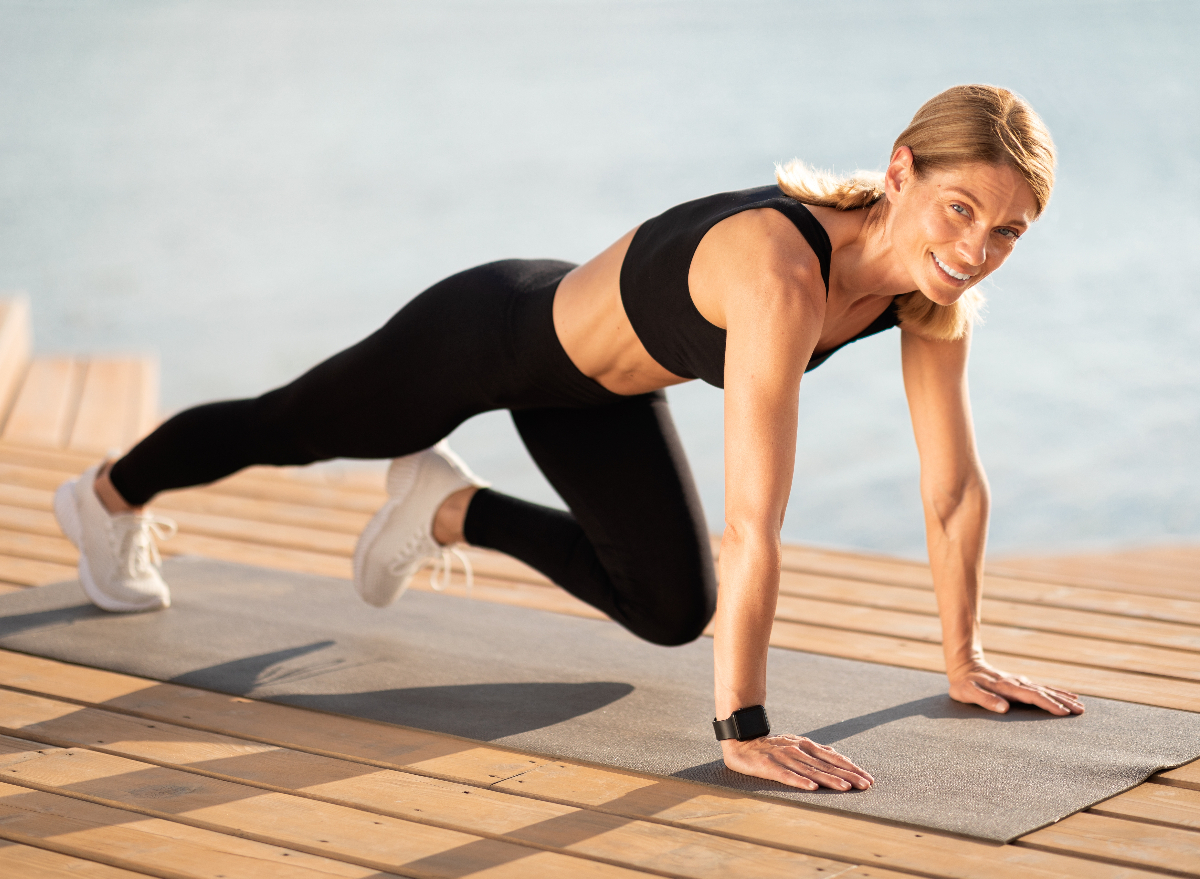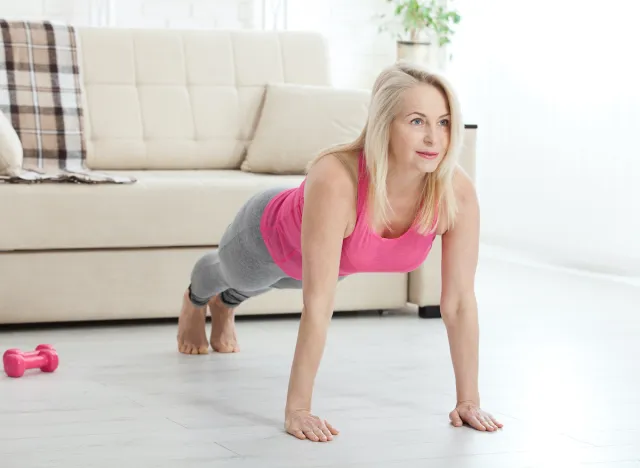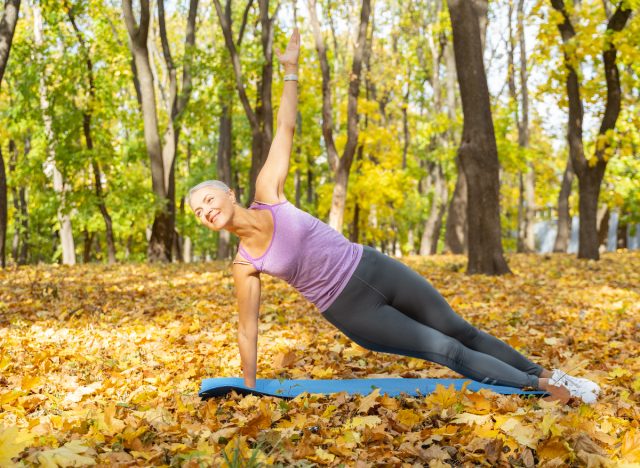Foolproof Exercise Habits for a Flatter Stomach, Trainer Reveals

There are many benefits to achieving a flatter stomach. First off, you can eliminate or lower your risk of developing many chronic health conditions, such as type 2 diabetes and heart disease, according to Medical News Today. Having a toned tummy can also be a real confidence builder, since your favorite outfits will fit better, and you'll feel all-around healthier. We spoke with Jacquie Smith, a certified integrative nutrition health coach from IIN and a fitness instructor specializing in barre, yoga, and pre/postnatal workouts, who shares some foolproof exercise habits for a flatter stomach that are easy to stick with.
Stomach fat is not particularly easy to get rid of, even if you maintain a consistent exercise plan and healthy diet. The fat cells in your belly contain a greater amount of alpha receptors, which makes the weight loss process a lot more grueling, according to CoolSculpting CT. So when you kick off your fitness journey, don't be surprised to see your arms, chest, and face lose weight before your midsection does.
It's important to be mindful of a few essential steps at the gym, in the kitchen, and throughout each day that are all important in helping you reach your goal and maintain it long after. Incorporate these positive changes in your routine, and soon enough, you will start to see progress! Keep reading to learn more about these foolproof exercise habits for a flatter stomach.
Lower your consumption of refined carbs, and kick up your fiber and protein intake.

First up, in order to achieve a flatter belly, lowering your consumption of refined carbs is a must. Medical News Today explains that carbs such as white pasta and bread turn into glucose, which can lead to excess fat. Switch up your carbs to healthy, whole-grain carbs, like whole wheat pasta, crackers, or bread (via Mayo Clinic).
Kicking up your fiber intake is another excellent habit. It's an easy way to trick your body into feeling fuller for longer periods of time, which in turn can lower your food consumption, Medical News Today reports. Another plus? Fiber will help decrease stomach bloating.
While you're at it, Medical News Today also suggests adding more protein to your meals. Protein helps your body grow and repair muscle, as well as another source to help you feel fuller. Research indicates that consuming high-quality proteins like eggs and milk result in reduced abdominal fat.
Related: Best-kept Exercise Secrets for a Smaller Waist at 50, Expert Reveals
Perform 360 breathing before and during your workouts.

Now that you're in the know of a few food tricks, let's move to the gym with Jacquie Smith! The first habit you should do every time you exercise is 360 breathing. You may not think about how you're breathing during workouts, but practicing proper breathing techniques is essentially the basis of every move you perform (via Pronatal Fitness).
Smith suggests, "Do this before you workout to engage and activate your core. Breathe in through the nose to relax the pelvic floor and exhale forcefully out the mouth like you're blowing through a straw to pull your pelvic floor and abdominals in and up. It's also important to maintain this breath work throughout your workouts."
Related: Top-recommended Exercises To Lose 5 Inches of Belly Fat, Trainer Says
A 60-second plank is an amazing exercise for your core.

Smith says the one exercise to absolutely include in your daily regimen for a flatter tummy is planks. She tells us, "Starting and/or ending your workout with a 60-second plank is an amazing exercise for your core—and your whole body for that matter! It can be enhanced with 360 breathing."
In addition to strengthening your core, planks come with additional health benefits you should be aware of. This bodyweight exercise can boost your overall strength, as it activates a large number of muscles throughout your body. Planks can also enhance your posture, coordination, metabolism, and flexibility, along with helping alleviate back pain, HealthCorps reports.
Stabilize your core.

Next up, according to Smith, is to stabilize your core. Establishing a strong, stable core improves your balance and can even help you avoid potential injuries while exercising or tending to daily tasks.
Whatever your normal routine includes—reaching, pushing, picking things up, or general workout moves—it's imperative to be certain your core is stabilized. This is essential to making sure you don't overtrain other muscles and also to protect your back.








